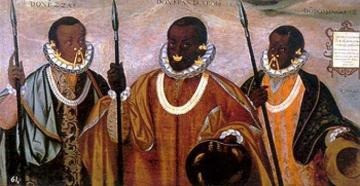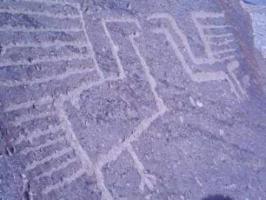Copy Link
Add to Bookmark
Report
Computer Undergroud Digest Vol. 03 Issue 09

****************************************************************************
>C O M P U T E R U N D E R G R O U N D<
>D I G E S T<
*** Volume 3, Issue #3.09 (March 19, 1991) **
****************************************************************************
MODERATORS: Jim Thomas / Gordon Meyer (TK0JUT2@NIU.bitnet)
ARCHIVISTS: Bob Krause / Alex Smith / Bob Kusumoto
RESIDENT GAEL: Brendan Kehoe
USENET readers can currently receive CuD as alt.society.cu-digest.
Back issues are also available on Compuserve (in: DL0 of the IBMBBS sig),
PC-EXEC BBS (414-789-4210), and at 1:100/345 for those on
FIDOnet. Anonymous ftp sites: (1) ftp.cs.widener.edu (or
192.55.239.132) (back up and running) and (2)
cudarch@chsun1.uchicago.edu E-mail server:
archive-server@chsun1.uchicago.edu.
COMPUTER UNDERGROUND DIGEST is an open forum dedicated to sharing
information among computerists and to the presentation and debate of
diverse views. CuD material may be reprinted as long as the source is
cited. Some authors, however, do copyright their material, and those
authors should be contacted for reprint permission. It is assumed
that non-personal mail to the moderators may be reprinted unless
otherwise specified. Readers are encouraged to submit reasoned
articles relating to the Computer Underground. Articles are preferred
to short responses. Please avoid quoting previous posts unless
absolutely necessary.
++++++++++++++++++++++++++++++++++++++++++++++++++++++++++++++++++++
DISCLAIMER: The views represented herein do not necessarily represent
the views of the moderators. Contributors assume all
responsibility for assuring that articles submitted do not
violate copyright protections.
++++++++++++++++++++++++++++++++++++++++++++++++++++++++++++++++++++
CONTENTS THIS ISSUE:
File 1: "Hollywood Hacker" or More Media and LE Abuse?
File 2: Computer Publication and the First Amendment
++++++++++++++++++++++++++++++++++++++++++++++++++++++++++++++++++++
----------------------------------------------------------------------
********************************************************************
*** CuD #3.09, File 1 of 2: Hollywood Hacker or Media Hype? ***
********************************************************************
From: Jim Thomas / CuD
Subject: "Hollywood Hacker" or More Media and LE Abuse?
Date: March 20, 1991
In CuD 3.08 we asked for information on the Hollywood Hacker.
Here's what we've learned so far.
Stuart Goldman, a freelance investigative reporter, was raided on
March 8, 1990, by Secret Service agents and the Los Angeles Police.
According to news stories in the Los Angeles Times and elsewhere,
Goldman was working on an expose of "sleaze-tv" shows such as Current
Affair and Hard Copy, shows for which he had also provided written
material. According to the news accounts, Goldman was caught
attempting to access Fox computers in New York and Los Angeles
containing files relevant to Current Affair. He was charged with the
usual litany of allegations (fraud, theft, etc) under Section
502(c)(2) of the California Penal Code. Section 502(c)(2) is
sufficiently vague to make any number of acts a felony:
s 502 (c) Except as provided in subdivision (h), any person
who commits any of the following acts is guilty of a public
offense:
(1) Knowingly accesses and without permission alters,
damages, deletes, destroys, or otherwise uses any data,
computer, computer system, or computer network in order to
either (A) devise or execute any scheme or artifice to
defraud, deceive, or extort, or (B) wrongfully control or
obtain money, property, or data.
(2) Knowingly accesses and without permission takes, copies,
or makes use of any data from a computer, computer system,
or computer network, or takes or copies any supporting
documentation, whether existing or residing internal or
external to a computer, computer system, or computer
network.
Conviction carries the following:
(d) (1) Any person who violates any of the provisions of
paragraph (1), (2), (4), or (5) of subdivision (c) is
punishable by a fine not exceeding ten thousand dollars
($10,000), or by imprisonment in the state prison for 16
months, or two or three years, or by both that fine and
imprisonment, or by a fine not exceeding five thousand
dollars ($5,000), or by imprisonment in the county jail not
exceeding one year, or by both that fine and imprisonment.
WHAT IS THE CASE ABOUT?
Piecing together the various news accounts and info from some of the
legal documents we have obtained, the following seems to be the
gist of the matter:
--Goldman had contributed material both to Fox's Current Affair and
Paramount's Hard Copy, two competitors in the "sleaze-tv" school of
journalism.
--According to various news articles, he was an articulate gadfly,
specializing in "expose" pieces for both tv and hardcopy media. He
was working on a story about tabloid tv, including the content and
practices of Hard Copy and Current Affair when arrested.
--As near as can be interpreted from the search affidavit and news
accounts, it appears that Goldman possessed access to a computer
account at Fox, which he may or may not have had legitimate (or
believed he had legitimate) access to. If we are interpreting the
public information correctly, it appears that no password was required
to access the accounts, only the log-on id. Tracey Miller, of KFI's
Live Line in Los Angeles, described Goldman as some one who "had
managed to infiltrate the world of tabloid journalism and then got
caught up in a sting operation involving Fox Television computers."
--The search affidavit indicates that Paul Smirnoff, of Fox tv in New
York, noticed attempted logins to the Fox computer in New York used by
Current Affair writers. The account had a null password (meaning no
password is required to gain access to the system) and the person to
whom the account belonged indicated that she had not changed the
password "for sometime." Smirnoff directed that a "bait" story be left
in the LA computer. Using a phone trap and caller logs, investigators
gathered evidence for their allegations against Goldman. On March 8,
1990, local police and Secret Service agents burst into Goldman's
apartment. However, unlike other raids, of which we have had
second-hand reports, there was an added twist to this one: FOX
TELEVISION WAS PRESENT WITH REPORTERS AND CAMERA CREW!
HACKING OR MEDIA HYPE?
Why was Fox tv present on this raid? The Secret Service has been
surprisingly reticent about their procedures to the point of
revealing little information in interviews, let alone allowing
video tapes to be made. We are repeatedly told that the time and dates
of raids are "secret." Yet, not only was Fox present, but they seemed
to have full cooperation from the agents present. Is collusion in
media events a standard practice between law enforcement and the
media? Were other news agencies invited? How does Fox rate? If CuD
asked to participate and report on a raid, my guess is that the
response would be less than enthusiastic. The video was hyped on Fox
on March 8 and shown on the news, teasing the audience with
sensationalistic promos and dubbing Goldman "The Hollywood Hacker." In
the current climate of media hyperbole and so-called crackdowns, this
strikes us has highly prejudicial.
The news broadcast of the tape comes across like a segment from
"COPS" or a Geraldo Rivera segment. There are the usual
teases "Its not military espionage and it's not corporate
spying," and the caption "HOLLYWOOD HACKER" graphically frames
for the audience how to interpret the events: This is not simply
a suspect, it is....THE HOLLYWOOD HACKER. Not "alleged" HH, but
the real McCoy!
The tape opens with agents outside a door in bullet proof vests
with guns drawn, hanging menacingly in a "hacker's might be
dangerous so we'd better be ready to blow the suck fuck away"
position. Granted, this was not as dramatic as the tapes of the
magnum-force beating of a Black LA motorist, but the sources of
such violence are more readily understandable when the force
of a raid is graphically depicted. One wonders whether Keating,
Ollie North, and others more preferentially situated stared down
a phallus surrogate when they were arrested. LE agents tell us
drawn weapons are standard procedure, because they never know
what may lie on the other side of the door. But, in case after
case of hacker raids, one wonders how many computerists shot it
out with the cops? And, if the situation was so dangerous, one
wonders why the tv crowd was allowed to charge in amidst the
officers.
On the tape, loud voices can be heard yelling: "Open the Door!!!!"
several times, and police and camera crowd enter, police with guns
drawn, Fox Folk with cameras rolling. Agents are yelling "Hands up!!
Against the Wall!" several times. The cameras are panning around and
focus on Goldman sitting on a couch, reading the arrest warrant.
Goldman's face was not, as it seems to be in shows such as COPS,
blocked out, and from all appearances, he could pass for an IBM senior
executive in his mid 40s.
WHY SHOULD THE CU CARE?
As with so many of the so-called hacker raids in the past year, it is
neither guilt nor innocence, but the questions raised by procedure
that should bother us:
1. The role of the media in inflaming public conceptions of hacking
seems, in this case, to exceed even the cynical view of
sensationalistic vested interests. The presence of a Fox news team and
the subsequent hacker hyperbole for what the indictment suggests is a
trivial offense at worst, makes one wonder whether some other motive
other than computer access might not have led to the raid. We have
seen from the events of 1990 that "victims" of computer intruders tend
to grossly over-state losses. Only further inquiry will reveal
whether Fox had motives for challenging an investigative journalist
doing exposes on the type of tabloid tv they have made popular. It
is worth noting that the Secret Service was involved in part because
of a claim of a "federal interest computer," but, according to news
accounts, they withdrew from the case almost immediately. Given the
tenacity with which they have pursued other cases on less evidence
(such as Steve Jackson Games, where part of the "evidence" was an
employing explaining in a BBS post that Kermit is a 7-bit protocol),
one wonders why they apparently ducked this case so quickly?
2. A second issue of relevance for the CU is the definition of
"hacker." By no stretch of the imagination can the acts of whoever
allegedly accessed the Fox computers be called hacking. From the few
legal documents we have obtained and from media accounts, the action
seems more akin to a graduate student using the account of another grad
student without "official" authorization. We do not defend computer
trespass, but we do strongly argue that there must be some distinction
between types of trespass and what is done once a trespass occurs.
3. We have not yet contacted Ralph Greer, the apparent attorney of
record in this case, so we can only surmise on a few possible issues.
We wonder if the case is being treated as a typical criminal case or
whether it is recognized that there are issues here that extend far
beyond the "normal" crime of "theft," "fraud," and other metaphoric
definitions brought to bear on computer cases? We also wonder if,
like some others, there is any pressure to "cop a plea" because of the
lack of a creative defense that Sheldon Zenner, The EFF and others
have introduced in some other cases? Again, for us the concern is not
who is or is not guilty in this case, but with the problem of
defending against charges that seem far in excess of the act.
4. The matter of defense also raises the issue of California law.
Parts of Section 502 and 502.7, as we (and others) have argued
previously, see overly vague, excessively punitive, and could make
even the most trivial form of trespass a felony. To non-lawyers such
as ourselves, it seems that the alleged acts would, in most states, at
worst be a misdemeanor and not subject a potential offender to three
or more years in prison.
5. We have argued long and loud against the current tactics employed
by agents on computer raids. Yes, we recognize that there are standard
procedures and we recognize that police do face potential danger in
raids. However, to raid an alleged computer offender in the same way
that a crack house is raided seems over-kill and dangerous. There are
many ways to arrest suspects, and raids, although dramatic, do not
seem justified in any single case of which we are aware. The tv tape
suggests that, if the suspect made an improper move (especially in the
confusion of everybody yelling at once, the suspect perhaps responding
to one set of commands and ignoring another, tv camera people in the
thick of things), a tragic consequence could have occured. We should
all be concerned with the "police state" mentality in such instances.
Yes, there may be times when caution and full operative procedures on
computer criminals is justified, but suspected hackers are not your
typical computer criminals. One wonders what the response will be if a
young teenager makes a "furtive gesture" and is blown away. One
credible teenager once told us that when he was arrested, the police
burst into his room with guns drawn. He was at the keyboard of his
computer, and the agent in charge, perhaps to impress her male
colleagues, allegedly pointed the gun to his head and said, "Touch
that keyboard and die!"
6. The search warrant for Goldman's apartment authorizes seizure of a
variety of material that seems--as it has in other cases--far in
excess of what could even by a computer illiterate be used for any
related offenses. This raises the issue of what constitutes "evidence"
in such cases. We have seen from other raids that posters, personal
letters unrelated to computers, news clippings, telephones, video
tapes, science fiction books, research notes, and other artifacts were
taken. Law enforcement agents readily justify this, but when raiding
forgers, car thiefs, or even drug dealers, the scope of seized
equipment is much narrower. Police, to our knowledge, do not
confiscate all the spoons in the house, the matches, or the stove,
when arresting suspected junkies. Yet, this is the mentality that
seems to guide their seizures of equipment in computer cases.
In a recent issue of RISKS Digest, moderator Peter G. Neumann observed
"that there is still a significant gap between what it is thought the
laws enforce and what computer systems actually enforce." I interpret
this to mean simply that the law has not caught up to changing
technology, and old, comfortable legal metaphors are inappropriately
applied to new, qualitatively different conditions. Calling simple
computer trespass (even if files are perused) a heavy-duty felony
subjecting the offender to many years in prison does not seem
productive.
The point seems to be that emerging computer laws are archaic. Neither
those who write the laws nor those who implement them have a clear
understanding of what is involved or at stake. When mere possession
(not use, but possession) of "forbidden knowledge" can be a felony (as
it is in California), we must begin to question what the law thinks
it's enforcing.
Few objected to the enactment of RICO laws, and fewer still to the
laws allowing confiscation of property of drug suspects. The attitude
seemed to be that harsh measures were justified because of the nature
of the problem. Yet, those and similar laws have been expanded and
applied to those suspected of computer abuse as we see in the cases of
Steve Jackson Games, RIPCO BBS, the "Hollywood Hacker," and others
have been raided under questionable circumstances.
I'm wondering: What does law think it's enforcing? What is the
appropriate metaphor for computer trespass? What distinctions should
be made between types of offense? Please remember, nobody is
justifying trespass, so continual harangues on its dangers miss the
point. I am only suggesting that there is a greater risk from
misapplication of law, which--like a virus--has a historical tendency
to spread to other areas, than from computer hackers. It's easier to
lock out hackers than police with guns and the power of the state
behind them, and we have already seen the risks to people that result
from over-zealous searches, prosecution, and sentencing.
And, at the moment, I suggest that it's law enforcement agents who are
the greatest danger to the computer world, not hackers. Why? Because
"there is still a significant gap between what it is thought the laws
enforce and what computer systems actually enforce." As Edmund Burke
once (presumably) said, the true danger is when liberty is nibbled way
for expedience and by parts.
********************************************************************
>> END OF THIS FILE <<
***************************************************************************
------------------------------
Date: Thu, 28 Feb 91 09:53:50 EST
From: "Brian J. Peretti" <PERETTI@AUVM.BITNET>
Subject: Computer Publication and the First Amendment
********************************************************************
*** CuD #3.09: File 2 of 2: Computers & First Amendment ***
********************************************************************
Computer Publication and The First Amendment
Copyright Brian J. Peretti
Computers and the Law
Since their introduction, personal computers have had a tremendous impact
on society. Computer, printers and their software have replaced
accountants, secretaries and even typewriters in many offices across the
United States. With the advent of this new way to gather, process and
distribute information, new problems, many that could never have been
perceived by the Framers of the Constitution, have developed. The
Constitution is the basis of law in the United States. Although created in
1787, it still governs the manner in which legal decisions are made with
very few changes. It, along with the Bill of Rights and other amendments,
has established what may or may not be done to a person, group,
organization or business without infringing on its rights. The broad
language was created so that the Constitution would be able to change and
expand with the times. Although the founding fathers did have an idea of
what the press was in their day, it has been expanded to cover television
and radio. This coverage should be expanded to encompass the new media of
computer publications. By deciding that computer publications will have
the same rights under the first amendment as newspapers, information will
be dispersed throughout the nation in a more efficient manner so that the
goal of the first amendment will become reality.
I. What is a computer publication
Computer publications can take many forms. It has been
argued that bulletin boards should be considered computer
publications. The reason is that since the people who are in
contact with the bulletin boards must communicate with the boards
through the written word, that these communications should thus
be considered publications.
This paper is concerned with publications that are created
exclusively on a computer or computer system. There have been
only a few such computer publications.1
There has not been a definition defining what is a computer
publication. However, there are many similarities between the
various newsletters that will give us a definition of what one
is. First, all of the material which makes up the publication
must have been created on a computer. This is to say, that
although the information may have been written on paper as rough
drafts or may have been gleaned from printed books or newspaper,
the articles that compose the publication must have been written
IN FINAL FORM ON THE COMPUTER.
The production of the newsletter must also occur exclusively
on the computer. This includes the editing, the check for
spelling and formatting errors and the actual production of what
the newsletter will look like, including the letterhead of the
publication, if there is to be one.
The transportation of the material that is to be contained
in the newsletter must occur via a computer network2 or by an
exchange of magnetic disk3, magnetic tape4, electrical impulses
or other non-print media. This includes not only the gathering
of the stories, but also the distribution of the newsletter to
its subscribers.
The computer magazines or newsletters that have existed in
the past also had a common denominator in that they almost
exclusively were published by computer users, for computer users
and concerned computer topics. Although this could be a
criteria, it would be to restrictive. It is very likely, with
the continued proliferation of computers in our society, that
publications with a much different orientations will emerge. If
computer publications are to be protected, the topic of their
publication should not be determinative of whether they fall
under the definition of a computer publication.
There are other publications that address the same issues
that have been published in "Phrack". An example is 2600 on Long
Island, New York which publishes material in printed form
concerning generally the same information.5 However, it is the
form in which "Phrack" was published and not the content of the
magazine that is the issue of this paper.
II. Phrack6
Craig Neidorf is a student at the University of Missouri.
At sixteen, he and a friend started to publish Phrack7. The
way in which he went about creating his newsletter was to accept
articles written by persons throughout the country. These
articles would be left in his mailbox at the university or to
retrieve articles written on computer bulletin boards. After he
logged on to the system, he would then mail the articles from the
mainframe computer to his person computer at his residence. If
these articles would need to be edited, he would then do any
necessary editing. Once he complied a large enough group of
articles, he would then send the articles to the mainframe
computer along with a heading and send it to his 250 subscribers.
There was no charge for the newsletter.8
III. The Historic Rights of the Press
In order to discover whether or not the protections afforded
to the press in the first amendment should be extended to this
new form of information distribution, a look to the past is
essential. Originally, control of the press by government was
total. However, as time passed, both the monarch of Great
Britain and their rulers in the American Colonies allowed greater
freedom to publish.
A. The English Experience.
At first, England was an absolute monarchy, in which the
king could do as he pleased. In 1215, the Magna Carta was
signed, whereby the lords of England put restrictions on the
King, which he pledged not to violate.9 The document, although
not seen as an admission of the King that there were civil right,
he did acknowledge that there were some basic human rights.10
In 1275, the De Scandalis Magnatum was enacted which
punished anyone who disseminated untrue information or "tales"
that could disrupt the atmosphere between the king and his
people.11 Over time this statute was gradually expanded. In
1378, it was broadened to cover "peers, prelates, justices and
various other officials and in the 1388 reenactment, offenders
could be punished "by the advice of said council."12
The first printing presses were established in Great Britain
toward the end of the 15th century. When the De Scandalis
Magnatum was reenacted in 1554 and 1559, "seditious words" were
included as words that could bring punishment.13 This law,
enforced by the Court of the Star Chamber, was a criminal statute
to punish political scandal.14
Regulations placed upon printers soon followed. In 1585,
the Star Chamber required that in order to print a book, the
publisher would have to get a license.15 A monopoly was created
in the Stationers' Company, which had 97 London stationers, that
could seize the publications of all outsiders.16 A 1637 ordnance
limited the number of printers, presses and apprentices.17
Punishment, at the time, was not limited to just printing, but
also to "epigram[s] or rhyme[s] in writing sung and repeated in
the presence of others . . . [or] an ignominious or shameful
painting or sign."18
Although the Star Chamber had been abolished in 1641, the
licensing system remained through the orders of 1642 and 1643.19
The Licensing Act of 1662 was a temporary statute which kept the
licensing provisions until 1679, when it expired.20 During the
reign of James II, licensing was renewed only to expire and not
be reenacted in 1695.21
Having realized that licensing was not the answer, Queen
Anne in 1711 enacted a Stamp Act, by which a duty was imposed on
all newspapers and advertisements.22 The purpose was to both
restrain the press and destroy all but the larger newspapers.23
Blackstone summed up the state of the law Great Britain
concerning the press in his Commentaries by writing:
The liberty of the press is indeed essential to the
nature of a free state; but this consists in laying no
previous restraints upon publications, and not in freedom
from censure for criminal matter when published. Every
freeman has an undoubted right to lay what sentiments he
pleases before the public; to forbid this, is to destroy
the freedom of the press; but if he publishes what is
improper, mischievous, or illegal, he must take the
consequences of his own temerity.24
B. The Colonial Experience
The first presses arrived at Harvard University in 1638 and
were used to disseminate church information.25 Aside from this
purpose the colonial governments, when still under the power of
Great Britain did not look favorably upon the press. However,
with power in the colony moving toward the people, the press
gained more freedom from the strict control imposed by the
government.
Each colony treated the press differently, although each did
restrict the press. In 1671, Governor Berkeley of Virginia wrote
"But I thank God, there are no free schools nor printing, and I
hope we shall not have these hundred years; for learning has
brought disobedience, and heresy, and sects into the world, and
printing has divulged them, and libels against the best
government. God keep us from both!"26 In New York, until 1719,
all governors "had been instructed to permit no press, book,
pamphlets or other printed matter %without your especial leave &
license first obtained.'"27
Gradually, state controls of the press gradually
diminished.28 The Trial of John Peter Zenger, 17 Howell's St. Tr.
675 (1735) illustrates how much the colonists were opposed to
restrictions on the press. Zenger had printed material in his
New York Weekly Journal a satiric article critical of New York
Governor William Cosby. The governor had Zenger charged with
seditious liable by the Attorney General after neither a Grand
Jury would indict nor the General Assembly take action.29
Although all the jury had to do was find him guilty was to
declare that he published the paper, Zenger's attorney, Andrew
Hamilton of Philadelphia argued a much larger issue. He put
before the jury the argument that truth is a defense to liable,
although the court rejected it.30 He was able to win an
acquittal of Zenger by requesting that the jury give a general
verdict of not guilty instead of a special verdict, which the
court requested, and which the jury did.31
C. The Adoption of the First Amendment
"The struggle for the freedom of the press was primarily
directed against the power of the licensor. . . . And the liberty
of the press became initially a right to publish %without a
license what formerly could be published only with one.' While
this freedom from previous restraint upon publication cannot be
regarded as exhausting the guaranty of liberty, the prevention of
that restraint was a leading purpose in the adoption of the
constitutional provision."32 The purpose of the first amendment
is "to prevent all such previous restraints upon publication as
had been practiced by other government."33
The first amendment states "Congress shall make no law
respecting an establishment of religion, or prohibiting the free
exercise thereof; or abridging the freedom of speech, or of the
press; or the right of the people peaceably to assemble, and to
petition the Government for a redress of grievances."34 It was
originally proposed as part of twelve amendments to the United
States Constitution during the first session of Congress in 1789.
On December 15, 1791, the Bill of Rights, minus the first two
amendments, became part of the Constitution.
What the first amendment means as applied to the press has
never been completely set forth. The only statement in Congress
as to what the press and speech clause was to stand for was
express by James Madison: "The right of freedom of speech is
secured; the liberty of the press is expressly declared to be
beyond the reach of this government."35 This, however, will be
of little help for us when considering whether computer
publications should receive first amendment protections.
IV. Does Computer Publications fall within the meaning of
Press as stated in the first Amendment.
Since the legislative history of the First Amendment will
not lead to a discovery concerning what is covered under it, we
must look to how it has been interpreted by the courts. An
examination must be undertook to determine what the courts have
decided concerning both the purpose of the amendment and whether
any physical manifestation guidelines on what fall within the
definition of the "press".
By examining what the drafters of the first amendment
thought that press was during their time, the only media which
would receive first amendment protections the printed press,
which would include newspapers, handbills and leaflets.
However, the court has not held the clause so narrowly.
The United States Supreme Court has taken a broad view in
considering what is the "press".36 "The liberty of the press is
not confined to newspapers and periodicals. It necessarily
embraces pamphlets and leaflets. . . . The press in its
historical connotation comprehends every sort of publication
which affords a vehicle of information and opinion."37 Thus, the
Court has ruled that motion pictures38 also deserve such
protection. Lower courts have held that the protection applies
to doctor directories,39 college newspapers40 and computer
bulletin boards.41
Computer publications satisfy the definition that the Court
has given to what is to be covered by the first amendment. By
their very nature, computer publications are a vehicle by which
information can be disseminated. In Phrack's first issue, the
purpose was to gather "philes [which] may include articles on
telcom (phreaking/hacking), anarchy (guns and death &
destruction) or kracking. Other (sic) topics will be allowed
also to a certain extent."42 These articles were to be
distributed to members of the community who wished to obtain
information on the topics in the "newsletter-type project".43
Since this publication passes the Lovell test,44 because of it
allows information to be distributed, these publication deserve
the protection given to the media by the first amendment.45
VI. Freedom of Newspapers and Broadcasting Media46
Currently there can be called two separate first amendment
doctrines. The first applies to newspapers. Newspapers can have
only a few restrictions placed on them. The second applies to
radio and television, which can have many types of controls
placed upon them. Computer publications, because of their
similarity to the former, should have the least amount of
restriction necessary placed upon them.
As stated, supra, the first amendment had no legislative
history that came along with it. Courts have had to interpret
how it should be applied to the "press" since they had no
guidance from the Congress. Although not to be applied in an
absolute sense, Breard v. City of Alexandria, La.,47 the Supreme
Court has only set forth three exceptions where prior restraint
of the newspapers are allowed. These restrictions, as stated in
dictum in Near v. Minnesota48 are 1) when it is necessary in
order that "a government might prevent actual obstruction to its
recruiting service or the publication of the sailing dates of
transports or the number and location of troops", 2) the
requirements of decency to prevent publication of obscene
materials, and 3) "[t]he security of the community life may be
protected against incitement to acts of violence and the
overthrow of force of orderly government." These exceptions,
although not having the force of law when stated, have been the
only exceptions allowed.
In the electronic realm, the Supreme Court has allowed
greater restraints to be placed on radio and television.
Licenses, although never allowed on newspapers,49 possibly as a
result of the English experience,50 have been allowed on
broadcast communication.51 Broadcaster must be fair to all sides
of an issue,52 whereas newspapers may be bias.53 Broadcaster are
required to meet the need of their community.54 However no court
has held that this may be applied to a newspaper.55
The main difference between these two groups is that
"[u]nlike other modes of expression, radio inherently is not
available to all. That is its unique characteristic, and that is
why, unlike other modes of expression, it is subject to
government regulation."56 This reasoning has been followed by
the court on many occasions.57
In the case concerning computer publishers, the less
restrictive newspaper limitations should be used. A computer
publisher does not send his information over a limited band or
airwaves. Any individual or group can become a computer publish
by obtaining a computer or access to a computer and a modem an
information to publish. The amount of these newsletters are not
limited by technology.
Because of the large number of publications that can appear,
there is no need to require that these publications be responsive
to the public. The dissemination of the information can be
terminated if the reader wants to by asking for his name to be
removed from the subscription list, similar to that of a magazine
or newspaper.58
V. Conclusion
Computer based publications are a new development in the
traditional way in which information is disseminated. The
history of the United States and the first amendment has been
against placing restrictions on the press. These new types of
publications, because of their similarity to other types of
media, should be granted first amendment protection.
The rational for placing restrictions on radio and
television should not apply to computer publications. Anyone who
has access to this technology, which is becoming more prevalent
in society, can publish in this manner. The least amount of
restrictions on their publication, similar to those placed on
newspapers, should be applied to this new media.
BIBLIOGRAPHY
Freedom of Speech and Press in America, Edward G. Hudon (Public
Affairs Press, Washington, D.C. 1963)
MacMillan Dictionary of Personal Computing & Communications
Dennis Longley and Michael Shain, eds. (MacMillan Press Ltd,
London 1986)
Shaping the First Amendment: The Development of Free Expression,
John D. Stevens (Sage Publications, Beverly Hills, 1982)
Freedom of Speech and Press in Early American History: Legacy of
Suppression, Leonard W. Levy (Harvard Press, Cambridge 1960)
American Broadcasting and the First Amendment, Lucas A. Powe, Jr.
(University of California Press, Berkeley 1987)
Printers and Press Freedom: The Ideology of Early American
Journalism, Jeffery A. Smith (Oxford University Press, New York
1988).
Seven Dirty Words and Six Other Stories: Controlling the Content
of Print and Broadcast, Matthew L. Spitzer (Yale University
Press, New Haven 1986).
Emergence of a Free Press, Leonard W. Levy (Oxford University
Press, New York 1985).
Computer Underground Digest, volume 2, Issue #2.12, file 1
(November 17, 1990).
Endnotes
1. Phrack, see infra, CCCAN, a Canadian publication, The
LEGION OF DOOM TECHNICAL JOURNAL, COMPUTER UNDERGROUND DIGEST AND VIRUS-L
DIGEST ARE A FEW OF THE MANY PUBLICATIONS.
2. MacMillan Dictionary of Personal Computing &
Communication (1986 ed) defines it as: "A network of computer
systems that allow the fast and easy flow of data between the
systems and users of the system." Id. at 68.
3. "[A] flat disk with a magnetizable surface layer on
which data can be stored by magnetic recording." Id. at 215
4. "A plastic tape having a magnetic surface for storing
data in a code of magnetized spots." Webster's NewWorld
Dictionary of Computer Terms (1988 3 ed.) at 223.
5. Frenzy over Phrack; First Amendment concerns raised in
computer hacker case, Communications Daily, June 29, 1990, at 6.
6. Information from this section was gathered in part from
Dorothy Denning's paper The United States vs. Craig Neidorf: A
Viewpoint on Electronic Publishing, Constitutional Rights, and
Hacking." [hereinafter Denning] and Interview with Craig Neidorf,
editor of Phrack (Oct. 16, 1990).
7. The name of the publication was derived from two words,
phrack (telecommunication systems) and hack (from computer
hacking). Denning. Hacking has been defined as "one who gains
unauthorized, use non-fraudulent access to another's computer
system." Webster's II New Riverside University Dictionary (1984)
at 557. For other definitions, see United States v. Riggs, 739
F. Supp. 414, 423-24 (N.D. Ill. 1990).
8. Mr. Neidorf was indicted after he published a Bell South
E911 document which was downloaded from the Bell South computer
system in Atlanta, Georgia. Determining if Mr. Neidorf should be
punished for publishing such information is beyond the scope of
this paper.
9. John Stevens, Shaping the First Amendment: The
Development of Free Expression at 27 (1982). [hereinafter
Stevens]
10. Id.
11. Edward Hudon, Freedom of Speech and Press in America,
8-9 (1963).
12. Id. at 9.
13. Id.
14. Id.
15. Id. at 10.
16. Id.
17. Id.
18. Id.
19. Id. at 11.
20. Id.
21. Id.
22. Id.
23. Id.
24. Leonard Levy, Freedom of Speech and Press in Early
American History: Legacy of Suppression, 14 (1963) [hereinafter
Levy] citing Sir William Blackstone, Commentaries on the Laws of
England 2:112-113 (1936).
25. Stevens, at 29.
26. Levy, at 21-22, quoting William Waller Hening, The
Statutes at Large Being a Collection of All the Laws of Virginia
(1619-1792) (Richmond, 1809-1823), 2:517. [emphasis in original]
27. Levy, at 24, quoting "Instructions to Governor Dongan,"
1686, in E.B. O'Callaghan and B. Fernow, eds., Documents Relative
to the Colonial History of the State of New York 3:375 (Albany,
1856-1887).
28. By 1721, Massachusetts effectively ended censorship by
licensing. Levy, at 36.
29. Edward Hudson, Freedom of Speech and Press in America
(1963) 19.
30. John D. Stevens, Shaping the First Amendment: The
Development of Free Expression (1982), 31.
31. Hudson, at 19.
32. Lovell v. City of Griffen, Ga., 303 U.S. 444, 451-52
(1938) [footnotes omitted].
33. Patterson v. Colorado, 205 U.S. 454, 462 (1907),
quoting Commonwealth v. Blanding, 3 Pick. [Mass.] 304, 313-14.
[emphasis in original]
34. U.S. Const. amend. I.
35. Leonard W. Levy, Freedom of Speech and Press in Early
American History: Legacy of Suppression (1960), quoting The
Debates and Proceedings in the Congress of the United States
(Washington, 1834 ff.) I:766, 1st Cong., 1st Sess.
36. "The Protection of the First Amendment, mirrored in the
Fourteenth, is not limited to the Blackstonian idea that freedom
of the press means only freedom from restraint prior to
publication." Chaplinsky v. New Hampshire, 315 U.S. 572, n.3,
(1941) citing Near v. Minnesota, 283 U.S. 697 (1931).
37. Lovell v. City of Griffin, Ga. 303 U.S. 444, 452
(1938).
38. "We have no doubt that moving pictures, like newspapers
and radio, are included in the press whose freedom is guaranteed
by the First Amendment." 334 U.S. 131, 166 (1948). "Expression
by means of motion pictures in included within the free speech
and speech and free press guaranty of the First and Fourteenth
Amendments." Joseph Burstyn, Inc. v. Wilson, 343 U.S. 495, 502
(1952).
39. "The propose directory [of physicians] contains
information of interest to people who need physicians. The
directory, therefore, is embraced by the term "press" as used in
the first amendment." Health Systems Agency of Northern Virginia
v. Virginia State Board of Medicine, 424 F. Supp. 267, 272 (E.D.
Va. 1976).
40. "A campus newspaper is part of the "press" for the
purpose of the First Amendment to the Constitution of the United
States." Arrington v. Taylor, 380 F.Supp. 1348, 1365 (M.D.N.C.
1974).
41. Legi-Tech v. Keiper, 766 F.2d 728, 734-35 (2d Cir.
1985).
42. Phrack, volume 1, issue 1, phile 1, reprinted in
Computer Underground Digest, volume 2, Issue #2.12, file 1
(November 17, 1990).
43. Id.
44. See, infra, note 35 and text.
45. This is not to say that publication of information in
furtherance of a crime or criminal activity should receive the
protection of the first amendment.
46. This section has been completed with the help of
Spitzer, Seven Dirty Words and Six Other Stories (1986).
47. 341 U.S. 622, 642 (1951), "The First and Fourteenth
Amendments have never been treated as absolutes."
48. 283 U.S. 697, 716.
49. Near v. Minnesota, 283 U.S. 697 (1931), New York Times
Co. v. Sullivan, 403 U.S. 713 (1971), Minneapolis Star and
Tribune Co. v. Minnesota Comm'r of Revenue, 460 U.S. 575 (1983).
50. See, supra, notes 9 through 24 and text.
51. Communications Act of 1934. 47 U.S.C. % 301 et. seq.
(1988) (Requiring that radio stations and television stations
obtain licenses).
52. Red Lion Broadcasting Co. v. F.C.C., 395 U.S. 367
(1969).
53. See, e.g., Evans v. American Federation of Television
and Radio Artists, 354 F.Supp 823, 838 (S.D.N.Y. 1973), rev'd on
other grounds, 496 F.2d 305 (2nd Cir. 1974), cert. denied, 419
U.S. 1093. ("In editorial comment, the New York Times and the
Washington Post may be unreservedly liberal, while the
Indianapolis News or the Manchester Union Leader may be
unremittingly conservative.")
54. 47 U.S.C. % 309(a). Trinity Methodist Church v. Federal
Radio Commission, 62 F.2d 850, (D.C. Cir. 1932), cert. denied,
288 U.S. 599 (1933). (holding that if radio broadcasts were not
in the public interest, a license could be revoked and not
violate the first amendment.)
55. Of course, if a newspaper is not responsive to its
readers, it may lose subscribers and either be forced to change
or go out of business. However, since in that hypothetical there
would be no state action, there would be no first amendment
issue.
56. National Broadcasting Co. v. United States, 319 U.S.
190, 226 (1943). The dissenting opinion also followed similar
reasoning. "Owing to its physical characteristics radio, unlike
the other methods of conveying information, must be regulated and
rationed by the government." Id. at 319.
57. Red Lion Broadcasting v. Federal Communication
Commission, 395 U.S. 367 (1969), and Federal Communication
Commission v. League of Women Voters, 468 U.S. 364 (1984).
58. For the same reason, the fairness doctrine should not
be applied to these types of publications.
********************************************************************
------------------------------
**END OF CuD #3.09**
********************************************************************





















